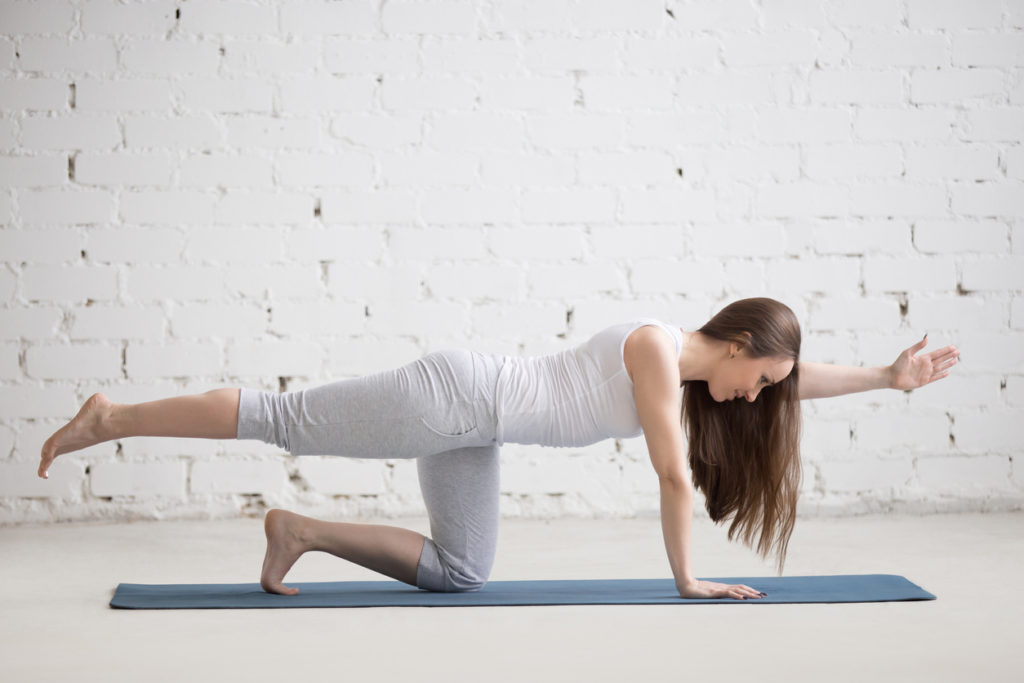 Improving your posture requires more than standing (or sitting) at attention. That’s because common postural issues including lordosis, an excessive dip in the lower back, and kyphosis, commonly called “hunchback,” are really symptoms of an underlying issue.
Improving your posture requires more than standing (or sitting) at attention. That’s because common postural issues including lordosis, an excessive dip in the lower back, and kyphosis, commonly called “hunchback,” are really symptoms of an underlying issue.
Fixing that issue – often nothing more than less-than-strong back and core muscles – is critical. “Over time, consequences of excessive curvatures in the spine can contribute to back pain, difficulty breathing, and nerve pain and numbness throughout the lower body,” explains Nicco Zenere, a kinesiologist with the Trainerize online training app, recommending that you regularly perform back- and core-strengthening exercises to improve posture. The best exercises to improve posture focus on training the all sides of the torso, pulling the shoulders into alignment, and reducing stress in the low back.
Bodyweight Exercises to Improve Posture
Integrate these five equipment-free exercises into your workout routine to strengthen your back and straighten up your spine for good.
1. Prone I, Y, T, W
This exercise strengthens the muscles in your upper back – including your rhomboids, upper traps and rear deltoids – to prevent that hunched-over look.
Instructions: Lie face-down on the floor with your arms extended and positioned so that your thumbs are pointing up. From here, pinch your shoulder blades together to raise your arms from the floor, then lowly return them to start. Perform with your arms positioned in an I (arms straight overhead), a Y (arms diagonally overhead), T (arms straight out to the sides), and W (arms bent and out to the sides). Make sure that all motion is coming from your shoulder blades and that you are not lifting your chest off of the floor with each rep.
2. Bird Dog
This move strengthens your deep-lying core muscles, which function to stabilize the spine, while also hitting your low back and traps.
Instructions: Get on the floor on your hands and knees, spread shoulder- and hip-width apart, respectively. Brace your core so that your back is flat. From here, lift one arm and the opposite leg and extend them so that they are parallel with the floor. Make sure not to “dump” your weight into your grounded knee. Pause, then lower to return to start. Repeat on the opposite side.
3. Glute Bridge
By strengthening the muscles that extend your hips, including your glutes and erector spinae (low back muscles), this move helps stabilize both your spine and pelvis.
Instructions: Lie flat on your back on the floor, knees bent so that your feet are flat on the floor. Brace your core to press your lower back toward the floor. From here, squeeze your glutes and drive through your heels to raise your hips until your body forms a straight line from knees to shoulders. Pause, then slowly lower to return to start.
4. Dead Bug
This harder-than-it-looks core exercise trains your spinal stabilizers to work not just isometrically, but while your arms and legs are moving – just like they need to in real life.
Instructions: Lie on your back with your arms and legs extended straight up toward the ceiling. Press your low back into the floor. From here, lower one arm and the opposite leg toward the floor as far as possible without your low back leaving the floor. Pause, then squeeze your abs to return to start. Repeat on the opposite side.
5. Hip Hinge

The foundation of advanced back-strengtheners such as the deadlift and the “good morning,” this move works the hamstrings, glutes, and erector spinae (low back) muscles to keep the pelvis and low back in alignment.
Instructions: Stand tall with your feet hip-width apart and your back 6 inches from a wall. From here, push your hips back behind you, lowering your chest toward the floor until your hips touch the wall. Allow a slight bend in your knees as you do so. Pause, then thrust your hips forward to return to start.
RELATED: 4 Simple Ways to Ease Tight Muscles